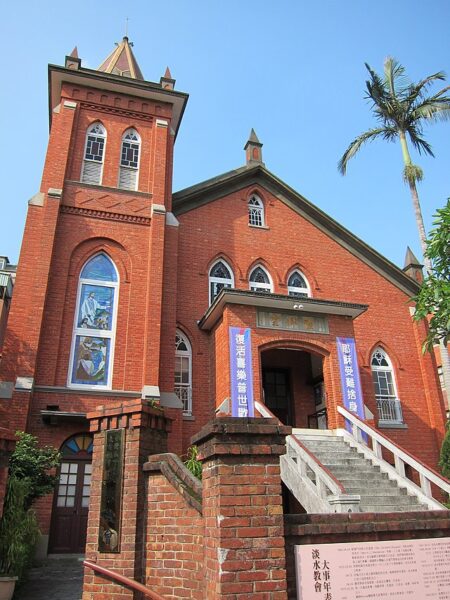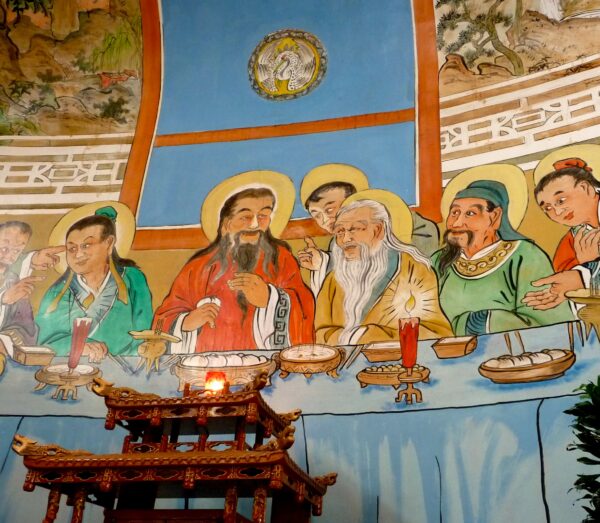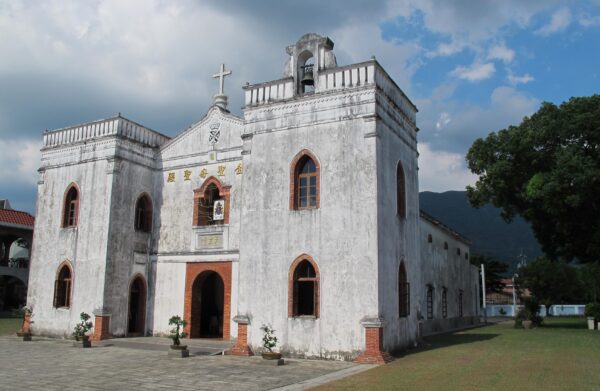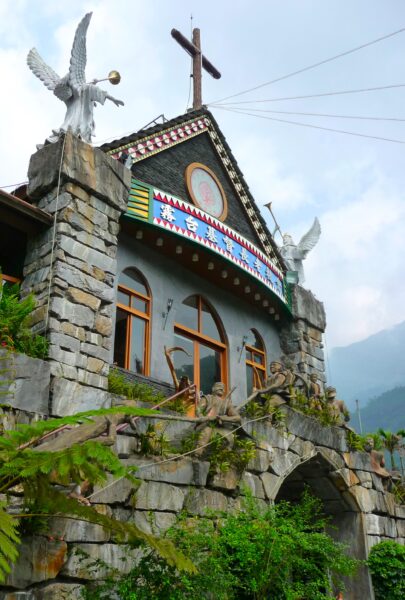Taiwan is one of the world’s most tolerant and religiously diverse societies. The majority of its nearly 24 million follow a mix of popular religion, Buddhism, and Taoism. Many of the gods and goddesses they worship are also venerated on the Chinese mainland and by ethnic Chinese communities in Southeast Asia. Some practise a ‘purer’ form of Mahayana Buddhism at places like Fo Guang Shan, and a few are Muslims. (The majority of those who attend Taiwan’s mosques are foreigners temporarily working or studying on the island.)
Around one in twenty Taiwanese is Christian. The most prominent denominations are the Presbyterian Church and the Roman Catholic Church. There are also small Lutheran, Baptist, Mennonite and Jehovah’s Witness congregations. Every major city and town has an outpost of the True Jesus Church, a sect founded in mainland China just over a century ago.
Strikingly ornate and colourful temples are so numerous in Taiwan that few tourists consider visiting any of the island’s churches. Yet among the approximately 4,000 Christian places of worship there are some truly fascinating churches and chapels. Here are six which you might want to add to your itinerary when planning a private tour of Taiwan with Life Of Taiwan.
Tamsui Presbyterian Church
A landmark in Tamsui near Taipei — but not always open to the public — this church is linked to the pioneering work of the Rev. George L. Mackay, the first Canadian to serve overseas as a Christian missionary. He arrived in Taiwan in late 1871 and quickly mastered the Taiwanese language spoken by the majority of the island’s population. Over the following three decades he planted sixty churches and extracted over 21,000 teeth from grateful rural folks who had no access to dental care, winning for himself and his sect a prominent position in local society.
This gothic-style building, which replaced the original structure designed by Mackay, dates from 1932-33 and was inaugurated by Mackay’s son, himself a missionary. The US-manufactured clock is 109 years old but hasn’t functioned since World War II.
Luce Memorial Chapel
Fans of I.M. Pei (1917-2019) have been known to detour to Taichung just to visit this early-career work of the legendary China-born American architect. A landmark on the campus of Tunghai University — which itself was founded in 1955 as the ‘spiritual successor’ of the several China-based Christian universities closed down by the new communist regime — it is named in honour of the Rev. Henry W. Luce (1868–1941), an American who served as a missionary in China for more than three decades. Some say it resembles the upturned keel of a boat or a shiny concrete tepee. Surprisingly Pei wasn’t able to visit the church until the 1960s, several years after its completion.
Holy Trinity Catholic Church
Externally unremarkable, the interior of this Catholic hall of worship is chock full of eye-catching images and symbols. The illustration behind the altar, inspired by da Vinci’s The Last Supper, shows Christ and his apostles as Asian men attired in traditional Chinese garb. They sit at a table crammed with chopsticks, plates of steamed buns, and Chinese-style candle holders.
 The depiction of the Feeding of the Multitude, the tree is strikingly similar to those in classical Chinese landscape paintings. Perhaps most unusual of all is the portrait which looks down over the worshipers from the rear wall. This plump individual has the protruding and bulbous forehead, big ears, drooping eyebrows, and white beard often associated with the Chinese god of longevity — yet here he represents the Christian almighty.
The depiction of the Feeding of the Multitude, the tree is strikingly similar to those in classical Chinese landscape paintings. Perhaps most unusual of all is the portrait which looks down over the worshipers from the rear wall. This plump individual has the protruding and bulbous forehead, big ears, drooping eyebrows, and white beard often associated with the Chinese god of longevity — yet here he represents the Christian almighty.
Holy Trinity Catholic Church is located in Yanshui, a small town in the northern part of Tainan that exudes ‘old Formosa’ charm. If you’re travelling between Tainan and Chiayi and you’re not in a hurry, it’s well worth stopping here for a couple of hours.
Holy Rosary Cathedral
The seat of the Roman Catholic Bishopic of Kaohsiung (incumbent: Peter Liu Cheng-chung, b1951), Holy Rosary Cathedral traces its history to 1859 when French missionaries established a chapel on this site near Love River in central Kaohsiung. The current structure, which dates from 1928. shows both Gothic and Romanesque influence.
While it lack the crypts and sarcophagi often found within old European churches, there are several interesting features: Stained glass windows filled with dove and rose motifs; confession boxes; the 14 Stations of the Cross; and a traditional pulpit and chancel. As befits its origins, it continues to serve an international congregation with an English-language mass every Sunday and services for those who speak Mandarin, Vietnamese, Tagalog, and Burmese.
Wanchin Basilica of the Immaculate Conception
The oldest Christian hall of worship still standing in Taiwan, the survival of this basilica minore is a monument to the efforts and tenacity of the Westerners who tried to spread their faith to the island in the third quarter of the 19th century. In the space of less than a decade, the Spanish Dominican priest who purchased this land in the interior of Pingtung County in 1863 saw his first church collapse following an earthquake, endured a kidnapping by money-hungry bandits, and faced down violent mobs aroused by anti-Christian rumours.
This Spanish-style edifice was completed in 1870; repairs in the 1940s left it with its distinctive asymmetrical façade. The church is at the centre of the thriving village of Wanchin (alternatively spelled Wanjin) where around three quarters of the residents are Catholic. Each year, on the Feast of the Immaculate Conception and around Christmas, the basilica hosts thousands of Catholics from other parts of Taiwan.
The village lies close to Road 185, a route we recommend to self-driving visitors and Life of Taiwan clients keen to explore the southernmost parts of the island.
 Wutai Presbyterian Church
Wutai Presbyterian Church
After World War II, Christian missionaries made rapid progress among Taiwan’s indigenous population. Now every tribal community has at least one church; often four or more sects are represented. The Presbyterian church in Wutai is both obviously Christian and yet also emblematic of Rukai culture. This landmark structure is concrete clad in slate (many of Wutai’s older homes feature slate roofs and walls). Inside the principal crucifix — twice the height of a man — is made of two varnished tree trunks. Among the hymn books and Bibles are texts written in the Rukai language.
If you’re driving towards Wutai, it makes sense to also stop in the smaller settlement of Shenshan and pay a visit to the Church of the Sacred Heart of Jesus. This Catholic house of worship is notable for its hand-carved wooden chairs, each one made to resemble a tribesman in traditional garb.
Churches worth visiting can be found in every corner of this fascinating island. If you’d like to see some of these religious landmarks, contact us today and begin planning your private tour of Taiwan.


 Wutai Presbyterian Church
Wutai Presbyterian Church